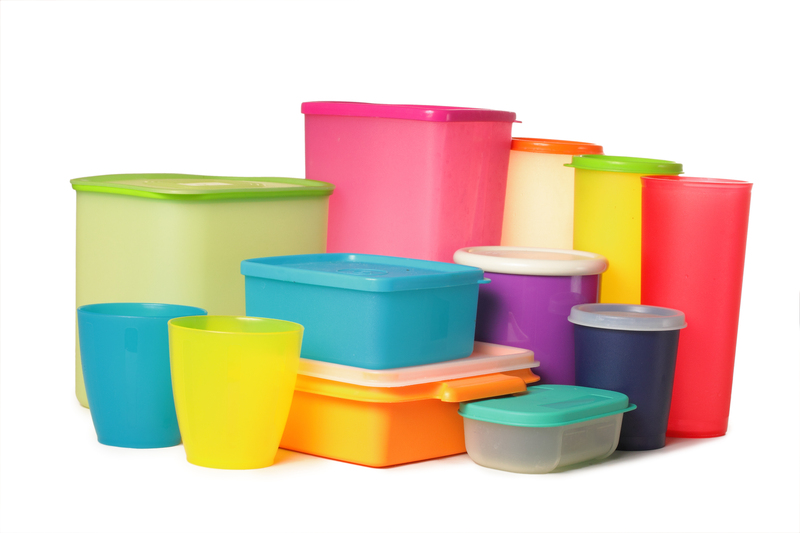Effortless Order: Post Clear-Out Clutter Control Strategies
Completing a thorough clear-out is a liberating experience. You've bid farewell to unwanted possessions, reorganized your living space, and reclaimed precious room to breathe and move. Yet, while you bask in newfound order, a crucial question remains: how do you maintain this tidiness moving forward? Without a sustainable approach, clutter often finds its way back, threatening your harmony. This in-depth guide explores actionable, effortless strategies for maintaining order after decluttering, helping you enjoy a consistently neat and inspiring home.
Why Post Clear-Out Clutter Control Matters
Decluttering isn't just about making space; it's about cultivating ongoing peace of mind. If you don't implement robust clutter management strategies after decluttering, you risk undoing your hard work. The cycle of accumulation may resume, creating frustration and wasted effort.
Adopting systematic, effortless clutter control techniques:
- Protects your initial time investment in clearing out
- Boosts your daily productivity and mood
- Reduces decision fatigue, stress, and cleaning time
- Helps you embrace a sustainable, minimalist lifestyle

Top Strategies for Effortless Post-Clear-Out Order
Ready to stay one step ahead of disorder? Use these clutter control strategies to maintain a streamlined and organized home with ease.
1. Practice the "One In, One Out" Rule
The 'One In, One Out' policy is a game changer in avoiding accidental accumulation. For every new item you bring into your space--a pair of shoes, a kitchen gadget, a book--commit to letting go of one existing item. This proactive approach directly controls clutter and keeps your home in balance.
- *Tip: Set a small donation basket in your closet or garage so it's simple to discard things regularly.
- Benefits: Instantly regulates inventory, especially in high-turnover spaces like wardrobes and kitchens.
2. Schedule Regular Mini Declutters
Rather than waiting for clutter to pile up and overwhelm, build small, routine decluttering sessions into your month.
- Weekly "Reset": Dedicate 15-20 minutes to surveying surfaces and hot spots--tables, countertops, entryways--and removing out-of-place items.
- Monthly Focus: Each month, tackle a problem-prone area, such as the medicine cabinet or hall closet, for a quick review.
Why it works: Regular, bite-sized clutter checks prevent accumulation, making maintenance virtually effortless. You'll rarely need another large-scale clear-out!
3. Embrace Smart Storage Solutions
Even after decluttering, thoughtful storage prevents items from becoming future clutter.
- Use clear bins or labeled boxes to group similar items.
- Add shelves or organizers to maximize vertical space in closets and cabinets.
- Choose multifunctional furniture--think ottomans with hidden compartments or beds with drawers.
Pro tip: Adopt the philosophy, "A place for everything, and everything in its place." Keeping storage solutions visible, accessible, and clearly labeled ensures everyone can uphold order effortlessly.
4. Optimize Drop Zones and Command Centers
High-traffic zones--like entryways, kitchens, desks, and mudrooms--are notorious for gathering daily clutter. Establish dedicated 'drop zones' or 'command centers' to corral these items instantly.
- Key bowls, mail sorters, and coat hooks can prevent piles from spreading.
- Wall-mounted organizers keep papers, school notices, and schedules out of sight yet readily accessible.
- Assign baskets for shoes, bags, or sports gear.
Streamlined drop zones mean you control clutter at its source, making order maintenance practically automatic.
5. Create Clear Boundaries for Each Space
After a clear-out, define the function and limits of every room or zone in your home. Prevent storage creep by ensuring each item truly belongs in its current location.
- Resist the temptation to let 'stuff' migrate into newly organized or empty spaces.
- Gently remind household members of each area's intended use and boundaries.
- Consider using labels or signs for shared spaces and kids' zones.
This deliberate zoning blocks clutter before it can build up again and keeps your home's flow logical and manageable.
6. Harness the Power of Digital Organization
Modern clutter is as much digital as physical. Keep your electronic life ordered to support your broader clutter control strategy.
- Stay on top of email and unsubscribe from unwanted lists.
- Regularly back up and sort digital files and photos.
- Use cloud apps or to-do lists so calendars and reminders don't pile up on paper.
By minimizing digital overwhelm, you'll free up mental bandwidth, making physical clutter management even smoother.
7. Rethink Your Relationship with "Stuff"
Post-clear-out, it's crucial to develop a mindful, intentional approach to future purchases.
- Before buying, ask: "Do I need this? Will it add genuine value? Where will it live?"
- Pause and reflect to avoid impulse shopping or "retail therapy" habits.
By focusing on quality over quantity, you support lasting order and sidestep unnecessary clutter at its source.
8. Make Decluttering a Family Affair
Order is most sustainable when all household members participate. Assign age-appropriate organizing tasks, set group decluttering days, and openly model tidy habits. Celebrate progress together for extra motivation!
Bonus Tactics for Effortless Clutter Control
- Adopt Minimal Decorating: The less you display, the less you have to clean or manage.
- Utilize Reminders: Place subtle notes (e.g., "Clear desk before bed") in strategic areas as gentle prompts.
- Set Donation Reminders: Schedule seasonal drop-offs to local charities or shelters to keep surplus from piling up.
- Pare Down Regular Purchases: Buy in moderation for consumables; avoid stocking up on non-essentials.
- Track High-Risk Items: Monitor categories prone to clutter, such as Tupperware, paperwork, or accessories, and purge regularly.
Addressing Common Post-Clear-Out Challenges
Even the most thoughtful systems can encounter bumps along the way. Here's how to handle typical post-declutter obstacles:
- Sentimental items sneaking back in: Set limits for keepsakes, use memory boxes, or take photos of items before letting them go to preserve their meaning without the bulk.
- Lack of time for maintenance: Build clutter control into your existing routines, such as a 5-minute tidy before bed or utilizing commercial breaks during TV time.
- Family resistance: Communicate the benefits of a tidy space (less cleaning, easier mornings, stress reduction), invite input, and compromise when possible.
- Paper buildup: Go paperless for bills/statements, and designate one tray or folder for important documents to sort weekly.
When to Seek Professional Help
If you find that clutter spirals out of control despite your efforts, it may be time to consult a professional organizer or decluttering consultant. These experts offer customized strategies, accountability, and support to reset your home environment and habits.

Effortless Order: Turning Strategies into Habits
The key to effortless post-clear-out clutter management is consistency, not perfection. Embrace small, regular actions that fit seamlessly into your everyday routines.
Here's how to turn these strategies into lasting habits:- Layer actions: Attach new organizing behaviors to established habits (e.g., always hang keys before removing your shoes).
- Reward progress: Notice and appreciate how much easier life feels with less clutter--use this as motivation to maintain new habits.
- Stay flexible: Adapt your clutter control systems as your lifestyle, family, or interests change.
- Be gentle with yourself: If things slip, simply go back to your clutter control basics--progress is more important than perfection.
Conclusion: Enjoy Your Effortless, Clutter-Free Life
Achieving effortless order after a clear-out isn't about rigid minimalism or constant vigilance. It's about embracing practical, sustainable strategies that prevent clutter from reclaiming your home. With tools like the 'One In, One Out' rule, regular mini-tidies, smart storage solutions, proactive digital management, and family involvement, you can protect your sense of space, peace, and possibility for the long run.
Let these clutter control strategies support you as you transform your space--and your relationship with your belongings. The result? More time, less stress, and a welcoming home that truly reflects your best self.
Start small, stay consistent, and savor the effortless order you've created--because your relaxed, organized life is here to stay!